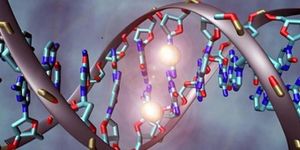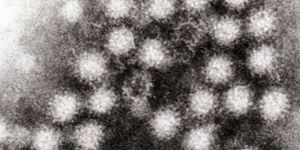While skeletal muscle is abundant in the human body, it been difficult for researchers to derive muscle cells from precursor cells or culture in sufficient quantities to study them. New research, published Nature Biotechnology and reported in Bioscience Technology, describes how investigators from Harvard-affiliated Brigham and Women's Hospital (BWH) identified and mimicked important developmental cues. In so doing, they drove cells to grow into muscle fibers, "producing millimeter-long fibers capable of contracting in a dish and multiplying in large numbers." They hope that this procedure will "offer a better model for studying muscle diseases, such as muscular dystrophy, and for testing potential treatment options" (http://www.biosciencetechnology.com/news/2015/08/potential-treatment-muscular-dystrophy?et_cid=4712951&et_rid=45505806&type=cta).

According to the National Institute of Neurological Disorders and Stroke (NINDS), the muscular dystrophies (MD) include than 30 genetic diseases characterized by progressive weakness and degeneration of the skeletal muscles that control movement. MD disorders differ in terms of the distribution and extent of muscle weakness, age of onset, rate of progression and pattern of inheritance. Duchenne MD, the most common form, primarily affects boys. Caused by the absence of dystrophin, a protein involved in maintaining the integrity of muscle, it begins between 3 and 5 years of age and progresses rapidly. Most boys cannot walk by age 12 and later need a respirator for breathing. Girls in these families have a 50 percent chance of inheriting and passing the defective gene to their children. Boys with Becker MD have faulty or inadequate dystrophin. Facioscapulohumeral MD, which begins in the teenage years and progresses slowly, causes progressive weakness in muscles of the face, arms, legs, and around the shoulders and chest. Myotonic MD, the most common adult form, includes prolonged muscle spasms, cataracts, cardiac abnormalities and endocrine disturbances (http://www.ninds.nih.gov/disorders/md/md.htm).
Previous researchers have used genetic modification to create muscle cells in the lab, but the investigators from BWH and the Harvard Stem Cell Institute wanted to grow large numbers of muscle cells efficiently to use in clinical applications. According to corresponding author Olivier Pourquie of Harvard Medical School's Department of Genetics and BWH's Department of Pathology, "We took the hard route: We wanted to recapitulate all of the early stages of muscle cell development that happen in the body and re-create that in a dish in the lab. We analyzed each stage of early development, and generated cell lines that glowed green when they reached each stage. Going step by step, we managed to mimic each stage of development and coax cells toward muscle cell fate."
A combination of secreted factors important at early embryonic stages are also essential for stimulating differentiation, the specialization of stem cells into particular cell types. With the right recipe for differentiation, the team produced long, mature fibers in a dish, derived from mouse or human pluripotent stem cells. The researchers also cultured stem cells from the mouse model of Duchenne muscular dystrophy, viewing the branched pattern that dystrophin-deficient muscle fibers show in the body. They also produced more immature cells called satellite cells that, in turn, produced muscle fibers when grafted into a mouse model of Duchenne muscular dystrophy. In addition to developing a better model for Duchenne muscular dystrophy, the new protocol could be useful for studying other muscle diseases.
"This has been the missing piece: the ability to produce muscle cells in the lab could give us the ability to test out new treatments and tackle a spectrum of muscle diseases," said Pourquie.









